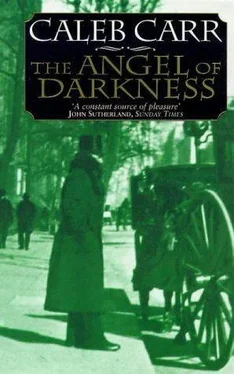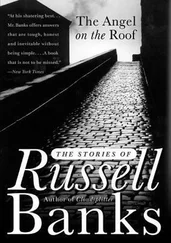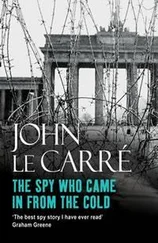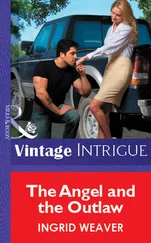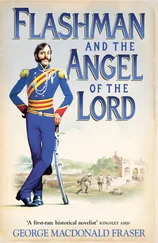Caleb Carr - The Angel Of Darkness
Здесь есть возможность читать онлайн «Caleb Carr - The Angel Of Darkness» весь текст электронной книги совершенно бесплатно (целиком полную версию без сокращений). В некоторых случаях можно слушать аудио, скачать через торрент в формате fb2 и присутствует краткое содержание. Жанр: Детектив, на английском языке. Описание произведения, (предисловие) а так же отзывы посетителей доступны на портале библиотеки ЛибКат.
- Название:The Angel Of Darkness
- Автор:
- Жанр:
- Год:неизвестен
- ISBN:нет данных
- Рейтинг книги:5 / 5. Голосов: 1
-
Избранное:Добавить в избранное
- Отзывы:
-
Ваша оценка:
- 100
- 1
- 2
- 3
- 4
- 5
The Angel Of Darkness: краткое содержание, описание и аннотация
Предлагаем к чтению аннотацию, описание, краткое содержание или предисловие (зависит от того, что написал сам автор книги «The Angel Of Darkness»). Если вы не нашли необходимую информацию о книге — напишите в комментариях, мы постараемся отыскать её.
The Angel Of Darkness — читать онлайн бесплатно полную книгу (весь текст) целиком
Ниже представлен текст книги, разбитый по страницам. Система сохранения места последней прочитанной страницы, позволяет с удобством читать онлайн бесплатно книгу «The Angel Of Darkness», без необходимости каждый раз заново искать на чём Вы остановились. Поставьте закладку, и сможете в любой момент перейти на страницу, на которой закончили чтение.
Интервал:
Закладка:
I’d learn, though: for in a matter of hours, I’d confront that danger again, and see its face.
CHAPTER 33
Mr. Moore, Mr. Picton, and I didn’t do half bad at the tables that night, and as a result we woke up Saturday morning with what you might call a rosy outlook on the tasks what lay ahead of us. The Doctor and Cyrus had already gotten themselves together and headed back out to the Westons’ farm in a small hired gig; and Marcus and Miss Howard were in the backyard of Mr. Picton’s place, wrangling with three big bales of raw cotton what had been delivered earlier. Lucius, meanwhile, had set up shop on the back porch and was carefully examining every part of Daniel Hatch’s Colt and dusting the thing for fingerprints before he went about the business of dismantling and refurbishing it. With everyone so usefully employed, it seemed safe for Mr. Picton to head up to his office at the court house and continue doing his research into cases what bore some resemblance to ours (what the legal types called “precedents”), while Mr. Moore and I headed into the dining room to have some of Mrs. Hastings’s excellent breakfast.
After we’d eaten, it was our turn to be pressed into labor: Lucius gave us a pair of magnifying lenses, a medical probe, and a couple of very sharp pocket knives, and told us to get to work on the section of planking and the driver’s seat from the Hatches’ wagon, which the detective sergeants had dragged around to the back of the house. We were supposed to go over every inch of these two items and, when we found something that looked like it might be a bullet hole, use the medical probe to see if there was in fact a metal object lodged inside. If there was, we were most definitely not supposed to try to pry it out: instead, we’d use the knives we’d been given to cut away all the wood around the thing, in order to keep it intact. Mr. Moore and I listened to these instructions with a noticeable lack of enthusiasm, since it was clear that if we followed this procedure, it would take quite a while to free a bullet from the wood, even if we got lucky and stumbled onto one quickly. But we tried to keep the grumbling to a minimum, and before long we were wrapped up in the job.
It took about an hour to come across the first likely candidate for a bullet hole. I found a small opening in one corner of the section of board and was very excited to discover that when I stuck the medical probe into it I made contact with something what was most definitely metal. I called the detective sergeants over to get their opinions, and they agreed that what I’d found might indeed be a bullet. The important thing now was to make sure that while I was cutting the wood around the object away, I didn’t touch the thing with the blade of my knife; a consideration that I, in the heat of my enthusiasm, confessed to not really understanding. If the bullet was recognizable as such, what did it matter if it had a couple of knife marks on it?
That, of course, was not the sort of question you generally wanted to ask Marcus or Lucius, unless you were in the mood for a very long lecture on some budding branch of forensic science. In this particular case, Mr. Moore and I were treated to forty-five uninterrupted minutes on the new field of ballistics, a clinic made all the more complete by Miss Howard’s participation. Put simply, ballistics seemed to amount to the firearms equivalent of fingerprinting: earlier in the century, an Englishman had discovered that bullets, when they passed through the barrel of a gun, were marked by whatever distinctive defects (nicks in the metal and the like) characterized said barrel. By 1897, when almost all pistols and long arms had rifled barrels, it’d been found that bullets were also marked by the rifling itself, which was made up of what were called “grooves and lands.” The grooves were the spiral tracks what were carved on the inside of the barrel (rotating toward either the right or the left) to make the bullet spin as it came out of the muzzle and thereby fly much straighter through the air; the lands were the spaces between these grooves. Bullets propelled through said grooves and lands were marked by lines that exactly reflected the specific rifling of the particular barrel. This system of identification had already claimed some success, though not in the United States: some years earlier, a French colleague of the detective sergeants’, one Monsieur Lacassagne, had matched the number, spacing, and twist of grooves on a bullet taken from a dead man to the barrel of a gun owned by a suspect. The man was afterward convicted, mostly on the strength of the ballistic evidence.
Now, this judgment had, the detective sergeants admitted, been a little premature, seeing as the lands and grooves of guns had never been catalogued even by manufacturer or model, much less by the individual characteristics of specific pieces; so it was possible that somebody else in France had owned a weapon with the same arrangement of lands and grooves as the gun what belonged to the fellow who’d been convicted. But the fact remained that there were now three ways to try to determine if a given bullet had come from a particular firearm: first, obviously, there was the caliber size; then there were particular marks left by defects in the barrel (not that every gun necessarily had such defects, but many did); and finally, there were the number and twists of the lands and grooves. Convincing as all this might’ve seemed, though, even a match between a bullet and a gun on all three counts couldn’t yet be considered the last word on identification, being as, again, there was no central authority that required gun manufacturers to register the individual specifications of each of their models: the possibility still existed that a given bullet what matched a given gun according to caliber, defects, and grooves and lands had actually been fired by some unknown matching weapon. Oh, sure, ballistic experts like the detective sergeants could protest that the chances of any two guns having exactly the same specifications were somewhere in the neighborhood of a million to one; but even a million to one left room for doubt, and so, while ballistic evidence had become what you might call mighty handy to modern-thinking investigators, it still wasn’t accepted as legally conclusive.
By the time the Isaacsons and Miss Howard had finished explaining this bit of business to Mr. Moore and me, I’d pretty well finished the job of getting my bit of metal free of the board; but my spirits, which had started to race at the prospect of actually being able to put a bullet to the ballistics test, sank considerably when I realized that I’d spent the better part of an hour carefully preserving an old nail head. Such discouragement, though, was common to detective work, I knew that much: so I picked up my magnifying lens and continued going over the surface of the wood, looking for another likely hole. Lucius, Marcus, and Miss Howard, meanwhile, continued their lecture, explaining what the younger Isaacson brother was up to with Daniel Hatch’s Colt: for ballistics didn’t begin and end, it seemed, with the matching of bullets to barrels. Lucius also had to carefully try to determine, based on the amount of rust and powder buildup on the Peacemaker, how recently it’d been fired, and how many times. The second question seemed easy enough to answer: there were three cartridges still in the six-shooter, giving the impression that three shots had been fired. This came as no big surprise: three was the number of bullets we’d expected to be involved in the shooting of Libby Hatch’s children. But, as usual when you were dealing with forensic science, things weren’t as simple as they appeared.
It was general practice, Miss Howard explained, for people who kept pistols in their homes to leave one chamber empty at the top position, so that if something or someone accidentally happened to catch the hammer without cocking it, the firing pin wouldn’t slam back down on anything but air. And as Lucius’s examination went on, the three of them became ever more convinced that Daniel Hatch had followed this procedure. Three chambers of his gun were, like I say, still loaded; but of the remaining three, only two had the kind of powder deposits that would indicate they’d been fired since the gun’s last cleaning. On top of that, the third empty chamber had a larger buildup of rust than the other two, indicating it’d been vacant longer. And as for the unlikely chance that somebody had found the gun, shot it, reloaded it, and dumped it back down the well, Marcus and Lucius felt they could rule that out by the measurement they took of the amount of rust in the barrel: the gun hadn’t been fired in years.
Читать дальшеИнтервал:
Закладка:
Похожие книги на «The Angel Of Darkness»
Представляем Вашему вниманию похожие книги на «The Angel Of Darkness» списком для выбора. Мы отобрали схожую по названию и смыслу литературу в надежде предоставить читателям больше вариантов отыскать новые, интересные, ещё непрочитанные произведения.
Обсуждение, отзывы о книге «The Angel Of Darkness» и просто собственные мнения читателей. Оставьте ваши комментарии, напишите, что Вы думаете о произведении, его смысле или главных героях. Укажите что конкретно понравилось, а что нет, и почему Вы так считаете.
